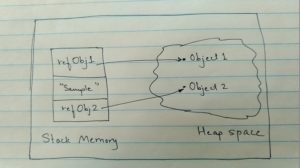When setting up environments, one of the few things we have to do is set up environment variables. JAVA_HOME is the most common environment variable you have to set up, especially if doing Java development. So previously, I had asked this question about knowing the difference between java.home and JAVA_HOME on StackOverflow here.
Question
Basically, I was using System.getProperty("java.home") in my code and it would return difference value from what I had set for JAVA_HOME. I was wondering why the difference. This post is about the explanation of the difference between these two properties.
Answer
There are some contradictory answers about the difference. But what I found on my own is that java.home is a system variable created based on Java Runtime Environment (JRE). This is more like a system variable. JAVA_HOME is an environment variable, this is required when you install JDK. Java Development Kit(JDK) is an environment based software that an individual installs and this software needs Java Runtime Environment (JRE). So JDK is a superset of JRE.
On any system, when you ask for JAVA_HOME environment variable, you generally get the path of your JDK installation. But since java.home is a system variable, the only way to find out that variable is through system properties. Also some machines have default Oracle installed JRE path and java.home might point to that path. You won’t be able to do any Java-based development if you do not have JAVA_HOME defined.
But the interesting fact is when you install JDK, it also installs JRE. But when you verify java.home , it doesn’t point to the same root path where JDK has been installed. One main reason for this, is that despite when you install JDK, JRE and JDK are two different products and many machines have default JRE installed.
Conclusion
In this post, I showed the difference between JAVA_HOME and java.home. Subscribe to my blog here.
References
- System Properties – Oracle Documentation

